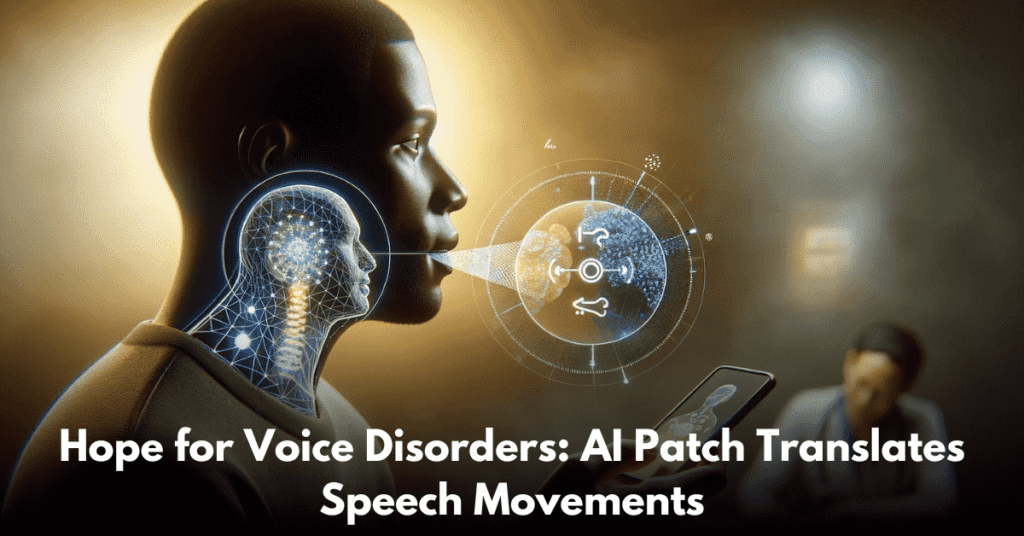Voice disorders affect millions worldwide, disrupting the ability to communicate effectively. However, a recent development brings new hope for those affected by such conditions. Researchers at the University of California, Los Angeles (UCLA), have unveiled a groundbreaking solution: a small yet powerful patch that utilizes artificial intelligence (AI) to translate throat movements into spoken words.
Voice disorders, affecting nearly a third of individuals during their lifetime, pose significant challenges. From organic changes to functional issues, the causes vary widely. Organic dysphonias result from physical alterations in the larynx, including inflammation, tumors, or damage due to substance abuse. Meanwhile, functional dysphonias arise from disruptions in vocal cord function, influenced by factors like posture, muscle tension, or psychological stress.
Traditionally, treatments for voice disorders have been limited and often invasive. However, the innovative patch developed by UCLA researchers offers a promising alternative. By harnessing the power of AI, this adhesive device adheres to the skin over the throat, capturing muscle movements and converting them into understandable speech in real-time.
The patch, still in the prototype stage, has shown remarkable potential in restoring communication abilities for individuals with voice disorders. Its flexibility, weighing just seven grams and approximately the size of a large coin, ensures comfort for users. Equipped with advanced technology, the patch translates throat muscle movements into electrical signals. These signals are then analyzed by a machine learning algorithm, which interprets them into coherent speech.
One of the significant advantages of this patch is its ability to facilitate communication even during movement. In a study conducted by the researchers, the patch demonstrated an impressive accuracy rate of 95% in predicting spoken phrases. While the current version can reproduce pre-recorded sentences, the researchers are working towards enabling spontaneous speech generation in future iterations.
The implications of this innovation extend beyond improving communication for individuals with voice disorders. Professionals whose vocations heavily rely on speaking, such as teachers or caregivers, stand to benefit significantly from this technology. By offering a non-invasive and convenient solution, the patch could revolutionize the way voice disorders are managed and treated.
Looking ahead, further research and development are needed to enhance the patch’s capabilities and accessibility. Clinical trials involving individuals with voice disorders will provide valuable insights into its efficacy and user experience. Collaborations with healthcare professionals and technology experts will be crucial in refining the patch and bringing it to market.
In conclusion, the AI-powered patch developed by UCLA researchers represents a significant breakthrough in addressing voice disorders. By seamlessly translating throat movements into speech, this innovative device offers hope for millions worldwide, empowering them to communicate effectively and regain their voice.



